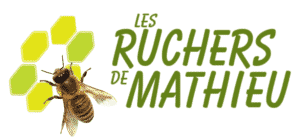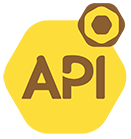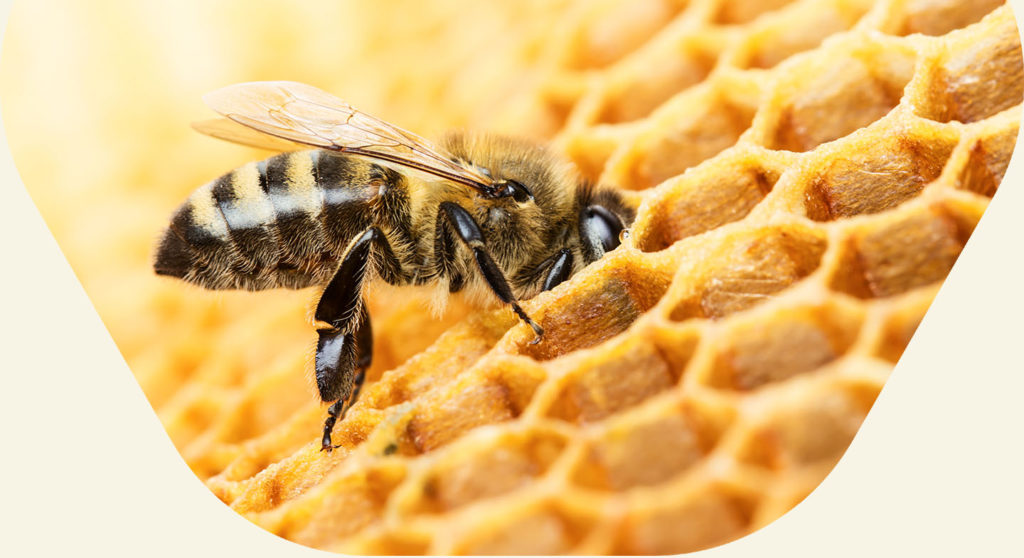Spring visit
March is an important month, as it heralds the start of the new beekeeping season. So it’s at this time of year that we carry out what we call the spring visit. This visit must be meticulous, with lots of observations, yet quick enough not to overcool the swarm.
Take advantage of a sunny, windless day to open your hive.
The aim is to carry out a health check at the end of winter:
Check that the queen has resumed laying
Since November, the queen has hardly laid any eggs. The winter bees are therefore waiting for the birth of new generations to make way. You’ll need to make sure you see eggs, if not larvae, at the bottom of the cells. The brood surface is not very large in this month of March, but should cover one hand on 2 or 3 frames in a hive. To boost the brood surface and thus accelerate the hive’s population, we recommend feeding either syrup, 1 or 2 kg in the feeder, or a protein candy to boost egg-laying.

Check for Varroa mites
Despite a treatment last summer after the honey harvest, your colony may have developed Varroa resistance. It’s therefore a good idea to carry out a new treatment to reduce Varroa pressure. But be careful about the treatments you use. Personally, I use Varromed once every 30ml or so (5ml per occupied frame), as it doesn’t require a waiting period before the supers can be installed.
Assess colony vitality
On a 10-frame Dadant hive, count the number of frames in the swarm: less than 4 occupied frames? The colony is weak and perhaps not in good health (probably due to the presence of Varroa mites). Between 5 and 6 frames? The colony is fine. More than 7 frames? It’s very populous and probably in good health!
Take a close look at the brood. Is it compact and evenly distributed? A well-distributed frame should contain a nice patch of brood (capped or with larvae) in its center, followed by a 5-10cm-wide crown of pollen and honey at the top of the frame. In this way, the nurse bees have food nearby to feed the young bees.
If the brood is rather sparse, it’s because the colony is unable to develop: the queen is exhausted (too old), there’s a lack of food on the frames, or the presence of diseases such as foulbrood…
With mimosa, hazelnut, willow and rosemary in bloom, the foragers must have already stocked up on food.

Opening your hive
Once you’ve got your outfit and your smoker (with a nice thick white smoke) you can head out to the apiary. Start by observing the flight board. It will give you plenty of information about the cleanliness of the hive, the bees’ comings and goings, and the foragers returning with pollen-laden legs. All these points are positive if identified.
You will now smoke the front of the hive to warn the keepers with 2 or 3 smoke pulses. Wait 30 seconds, then remove your hive roof. Peel off the frame cover or feeder with your frame lifter and, before removing it completely, blow a little smoke into it. Gently remove your frame cover and observe where the cluster is located. Generally speaking, it will be in the center of the 5 middle frames.
Always have the smoker nearby, as the smoke will be used to repel the bees as soon as they take over by being too present on the head of the frames.
To handle frames without crushing too many bees, start by removing a frame from the edge (left or right, whichever is less full). This can be taken out of the hive, placed at your feet or on a frame stand. To continue, remove the next frame by pressing your frame lifter against the frame next to it (from the center outwards). In this way, you push the hive’s second frame outwards, taking advantage of the first’s space so as not to crush the bees. You can then examine what’s on top and put it back in place. The second frame takes the place of the first. The third frame will take the place of the second, and so on. You will have taken only one frame out of the hive.
At the end of your visit, the frame you’ve taken out can be placed back in row 10, in other words, opposite to where you took it out. If not, you’ll have to rearrange all the frames in the opposite direction to put it back in its original position.
Your visit should last a maximum of 5 to 10 minutes per hive. Any longer and you’ll disturb the swarm and chill the brood!
When you close the hive, feed it if you’ve estimated that reserves are low. You should have the equivalent of 4 to 5 frames occupied by food.
Setting up your apiary
Choosing the right location for your apiary is certainly the most important choice. Not only will the honey harvest depend on it, but also ease of access to your hives and protection from bad weather.
In France, by law, your apiary must be located 20 meters from the public highway, and the same applies to a neighbouring dwelling. Consult your local town hall, however, as some towns and countries have different legislation.
For everyone’s sake, it’s best to contact your neighbor to inform him or her of the future presence of beehives near your home. Fear of stings can be a major concern.

To ensure that your bees thrive in your apiary, here are a few installation tips:
- choose a highly honey-producing area that covers the entire season, from March to October.
- an area sheltered from prevailing winds (or a hedge behind the hive).
- a very sunny apiary, with the hive facing the rising sun (south/southeast).
- a nearby water source, such as a stream or lake. Failing that, install an artificial water supply.
- the apiary should be accessible by car or wheelbarrow, to make handling easier, such as transporting the supers.
- place the hive on a stable base (iron or wooden hive supports are available, or on blocks) at least 30cm from the ground. Bees don’t like humidity.
Equipment you may need during the season:
- a queen excluder: to be placed between the body and the brood chamber to prevent the queen from laying eggs in the brood chamber.
- a bee catcher: to collect honey without disturbing the neighbors. Attached to a frame cover, it acts as a funnel to remove bees from the hive.
- Paint or linseed oil: to protect the wood of the hive, so that it doesn’t deteriorate too quickly. Paint is applied only to the outside of the wood and to the front of the flight board.
- a frame holder: to place the frames you remove during handling on the side of the hive.
Join API every month to read all our news and technical tips!
As usual, share your photos with us: we’ll post them on our site from the social networks with the hashtag: #apifonda #apiinvert!
See you next month on your API blog with your faithful partner, Les Ruchers De Mathieu!

LES RUCHERS DE MATHIEU Miellerie & Magasin d’Apiculture
Photos ©lesruchersdemathieu


